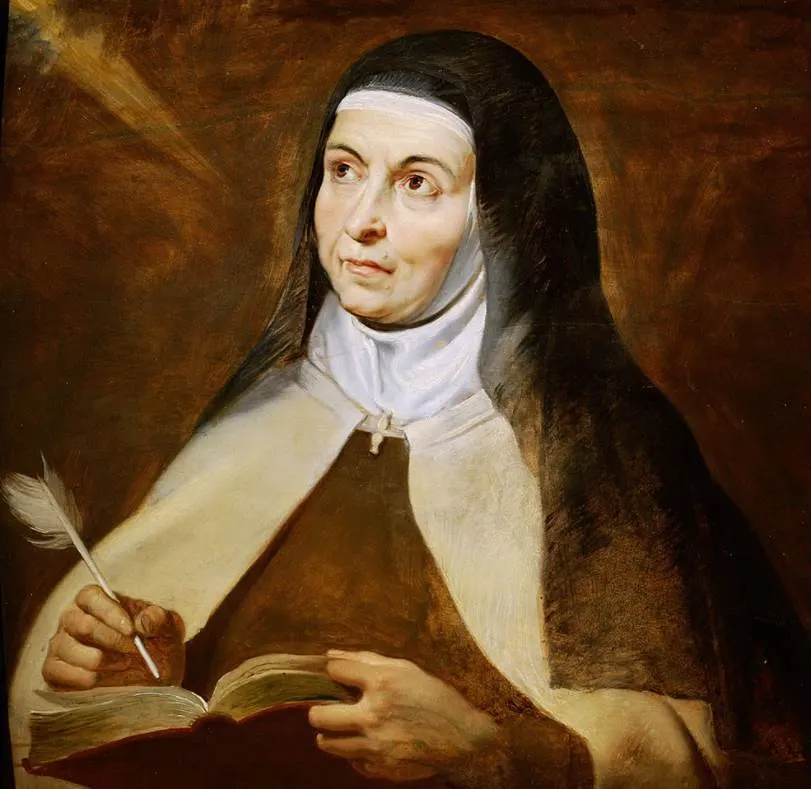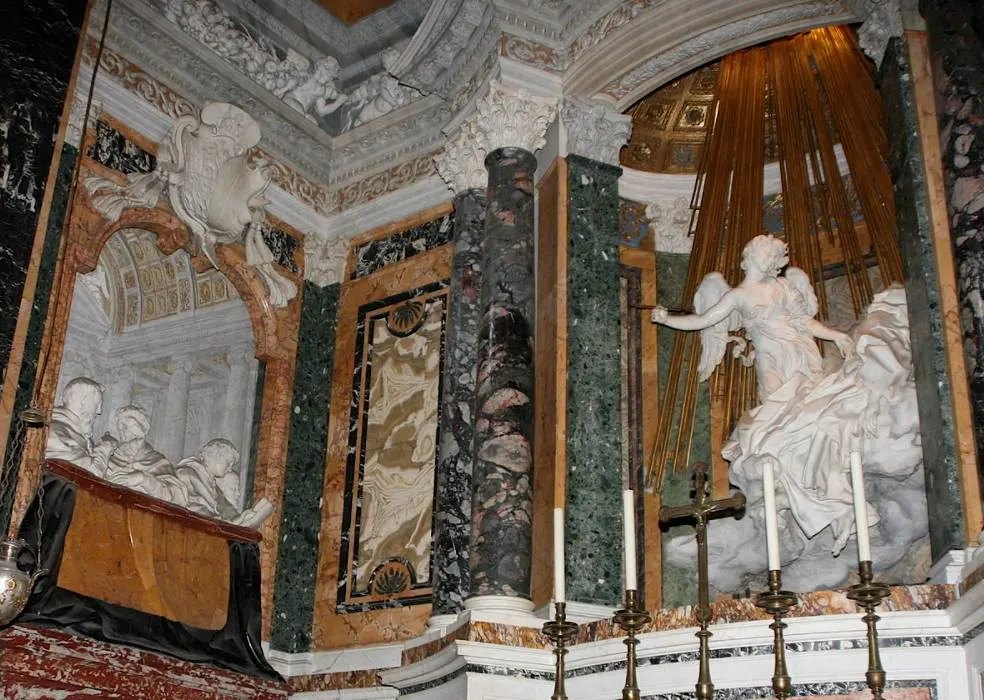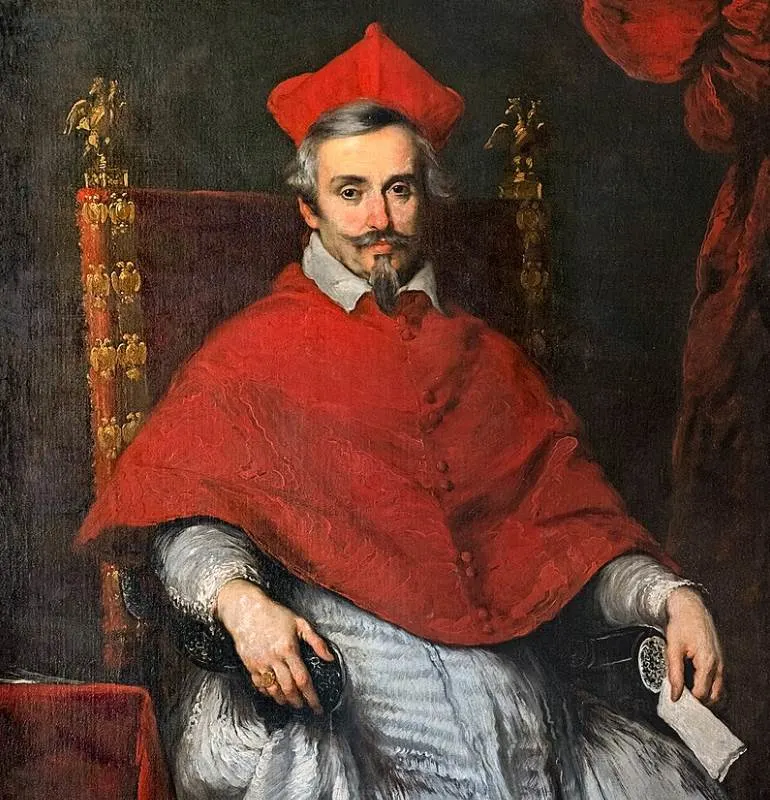When you enter a relatively obscure church in Rome, you’re able to admire one of the ultimate masterpieces of one of the most famous artists of the Baroque era in history, Gian Lorenzo Bernini (1598-1680).
In this article, you’ll discover some of the most interesting facts about “The Ecstasy of Saint Teresa” by Bernini, an amazing work of art on display in an equally fascinating setting.
1. It’s located in a Baroque church in central Rome
Very few cities in the world are home to such a collection of amazing churches as Rome. You could spend multiple days just visiting all the churches and admiring both their exterior and interior architecture.
Many of these churches also house a wide variety of artworks, including paintings, frescoes, and sculptures. One of the little-known churches in Rome is called Santa Maria della Vittoria, a 17th-century Baroque church dedicated to the Virgin Mary. It’s located just north of the historic heart of the city.
One of the chapels inside the church known as the “Cornaro Chapel” is a popular attraction because of a Bernini sculpture and accompanying sculptural group created by Gian Lorenzo Bernini, the leading Baroque artist of the 17th century.

2. It depicts a 16th-century female Christian Saint from Spain
Saint Teresa isn’t a martyr who lived during the Christian persecutions in ancient Rome but a Spanish noblewoman who became a Catholic nun in the 16th century. She was referred to as “Teresa of Ávila” (1515-1582).
She played an important role during the Catholic Reformation of the 16th century, the answer of the Catholic church to the Protestant Reformation that formed a serious threat all across Western Europe.
Apart from reforming the Carmelite Orders for both men and women, she was also a pioneer in the field of mental prayer, a particular form of meditation. She was canonized in the year 1622 by Pope Gregory XV, just 4 decades after she passed away.

3. It was completed over 3 decades after the church in the 17th century
Santa Maria della Vittoria is far from being the largest church in Rome with a length of just 35 meters (115 feet) and a width of 19 meters (62 feet). It can, however, be described as one of the finest examples of Baroque architecture in the city.

The church was completed between 1605 and 1620, which means just 2 years before Teresa of Ávila became Saint Teresa. Gian Lorenzo Bernini started working on the sculpture in 1647 and only completed the work in 1652.
The work was based on one of the visions mentioned in one of Saint Teresa’s extended volumes in which an angel pierced her with an arrow of love for God.

4. The sculpture was commissioned by a Venetian Cardinal
The sculpture was commissioned to decorate the final resting place of a Venetian Cardinal named Cardinal Federico Cornaro (1579-1653). He was the son of Doge Giovanni Cornaro, a man in the highest position in the Republic of Venice at the time.
This meant that money wasn’t a problem for the Cornaro family and he paid Bernini 12,000 scudi for the work, the equivalent of over $120,000 today and a hefty sum at the time.
The Cornaro Chapel can be found in the left transept of the elaborately decorated church.

5. Bernini also decorated the chapel in which the sculpture resides
The artist spent 5 years working on this remarkable work of art, and that’s mainly because he was preoccupied with the design of the entire chapel as well.
The central sculpture depicts the nun who is about to be pierced with an arrow by an angle, and on both sides, we can see sculptures of members of the Cornaro family. These include both Federico and Giovanni Cornaro.
Apart from being a renowned sculptor and architect, Bernini was a man of the theater as well. This must have been his ultimate fantasy because he sculpted his patrons in such a way as if they are watching a theatrical performance.

More interesting facts about The Ecstasy of Saint Teresa by Bernini
6. Although the sculpture appears to be relatively small, it’s life-sized. This also applies to the onlookers in the boxes on both sides of the centerpiece of the chapel.
7. Bernini decorated the chapel in such a way that natural light shines onto the central figures. Sunlight can enter the chapel through a hidden window just above the sculpture of Saint Teresa and the angel.
This remarkable feature allows the sculpture to be illuminated as if artificial light was shining onto it, quite ingenious and a remarkable spectacle, especially on sunny days.

8. Just like Rome, the city of Venice is home to a large number of amazing churches. So why did Cardinal Federico Baldissera Bartolomeo Cornaro choose to build his monumental tomb in Rome instead of his hometown?
He was elevated to the position of Cardinal in the year 1626 by Pope Urban VIII. Just a year earlier, his father became the Doge of Venice.
It was not allowed for the son of a Doge to hold any position appointed by the Pope, so this decision was quite controversial at the time and the reason why he chose to build his final resting place in Rome.

9. Santa Maria della Vittoria was built as a chapel dedicated to Saint Peter for the Discalced Carmelites, a Carmelite Order established by Saint Teresa herself in the 16th century. “Discalced” is the Latin word for “Without Shoes.”
The church ended up being rededicated to the Virgin Mary when the Catholic Reformation was reversed following the “Battle of White Mountain” in 1620 which resulted in a Catholic victory.
10. One of the most amazing ancient sculptures in history was discovered during the excavation world for the church. This sculpture is known as the “Borghese Hermaphroditus” and depicts a sleeping woman.
Cardinal Scipione Borghese was quick to confiscate this amazing ancient artwork to decorate his newly constructed Villa Borghese, now a famous museum known as the “Galleria Borghese.” Bernini ended up sculpting the mattress of this famous sculpture which is now on display at the Louvre in Paris.

11. The church is the only work that was both fully designed and completed by early Baroque architect Carlo Maderno (1556-1629). He was the man who also designed the façade of Saint Peter’s Basilica.
Unfortunately for Maderno, his work at Santa Maria della Vittoria is often completely overshadowed by the amazing design of the Cornaro Chapel and its centerpiece, the Ecstasy of Saint Teresa.
12. Bernini created a terracotta model of this sculpture between 1644 and 1647. This work is much smaller but served as a visual aid for the patrons to get an idea how the completed work would look like.
What’s remarkable about this model is that Bernini’s fingerprints can still be seen on it. This work stands about 47 centimeters (19 inches) tall and is on public display at the Hermitage Museum in Saint Petersburg, Russia.

